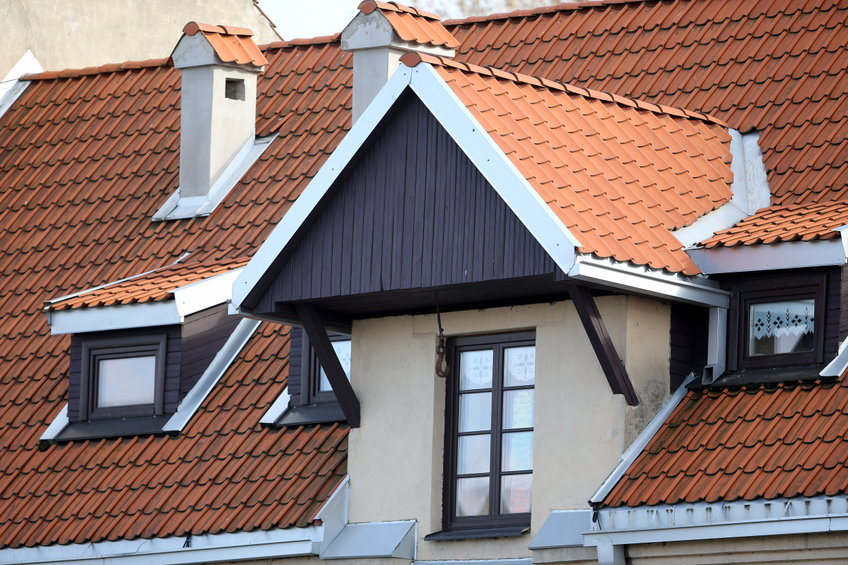- Green Roofs
A green roof is partially or completely covered with some type of vegetation. It is planted over a waterproofing membrane with a growing medium that keeps it alive.

- Wood Shakes and Shingles
Wood shakes and shingles have been fallen way behind in terms of popularity with the invention of more modern roofing materials. Although they provide a unique natural appeal and come at a relatively lower cost, it suffers major drawbacks than other roofing materials. Even if they are installed correctly, wood shingle roofs have poor longevity because they are vulnerable to pests, mold, and fire. They also discolor quickly than other roofing materials and are vulnerable to leaks, especially towards their end of life.
- Clay Tile
Proper installation of clay tile roofs guarantees a long lifespan and solid protection of property. However, they can be difficult to handle and install because of their fragile nature. It is not suitable in areas that experience heavy rainfall because the clay tiles can easily break down after a storm. Due to its brittleness, it is more prone to chipping and cracking which creates an additional expense of setting aside spare clay tile bundles. A clay tile roof is also susceptible to organic debris and can make it difficult to perform regular roof inspections. Clay tile is a type of roof that could cost you more upfront and in progressive maintenance.
- Slate Roofs
Slate is one of the oldest and most expensive roofing materials that can last for a lifetime. However, the installation process can be quite a challenge even for the most experienced roofers since every slate tile needs to be laid carefully. It is one of the heaviest roofing materials around and may not work well with other housing structures if proper supports are not installed beforehand. Inexperienced roofing contractors working on this project can quickly run into major problems because the roof deck needs to be reinforced to hold the weight of the entire slate roof.
- Concrete Roofs
Concrete roofs are a good long-term investment because they have a tried and tested durability and can withstand harsh weather conditions. However, this is only possible if the right steps were taken during installation. The installation process of concrete roofs is somehow tricky for DIY roofers who do not have much experience working with concrete. Poor workmanship and improper installation of concrete roofs could make it more prone to leakage, and compromise the outcome. Leakage problems could shorten its supposedly long lifespan and increase the costs of repair.
- Thatched Roofs
Thatched roofs use a timeless roofing material that originated in the mid-18th century where reeds or straws were used instead of wood shingles. Although it is still in use today, it is one of the most difficult roofing materials to work with since it needs to be laid properly. Some of the major issues with thatched roofs include leaking, compaction, and animal damage. Leaks could come from all areas of the roof including the corners, ridge, and valleys. It is quite a difficult task to make it weather resistant and watertight as it relies significantly on effective compaction.
Every roofing material comes with its benefits and downsides. When choosing the best type of roofing material for your home, it is important to look beyond the aesthetics, as you want a roof that will protect your property for a long time. It is also advisable to hire a professional roofing contractor so that the installation is done correctly to prevent unexpected outcomes in the future.
